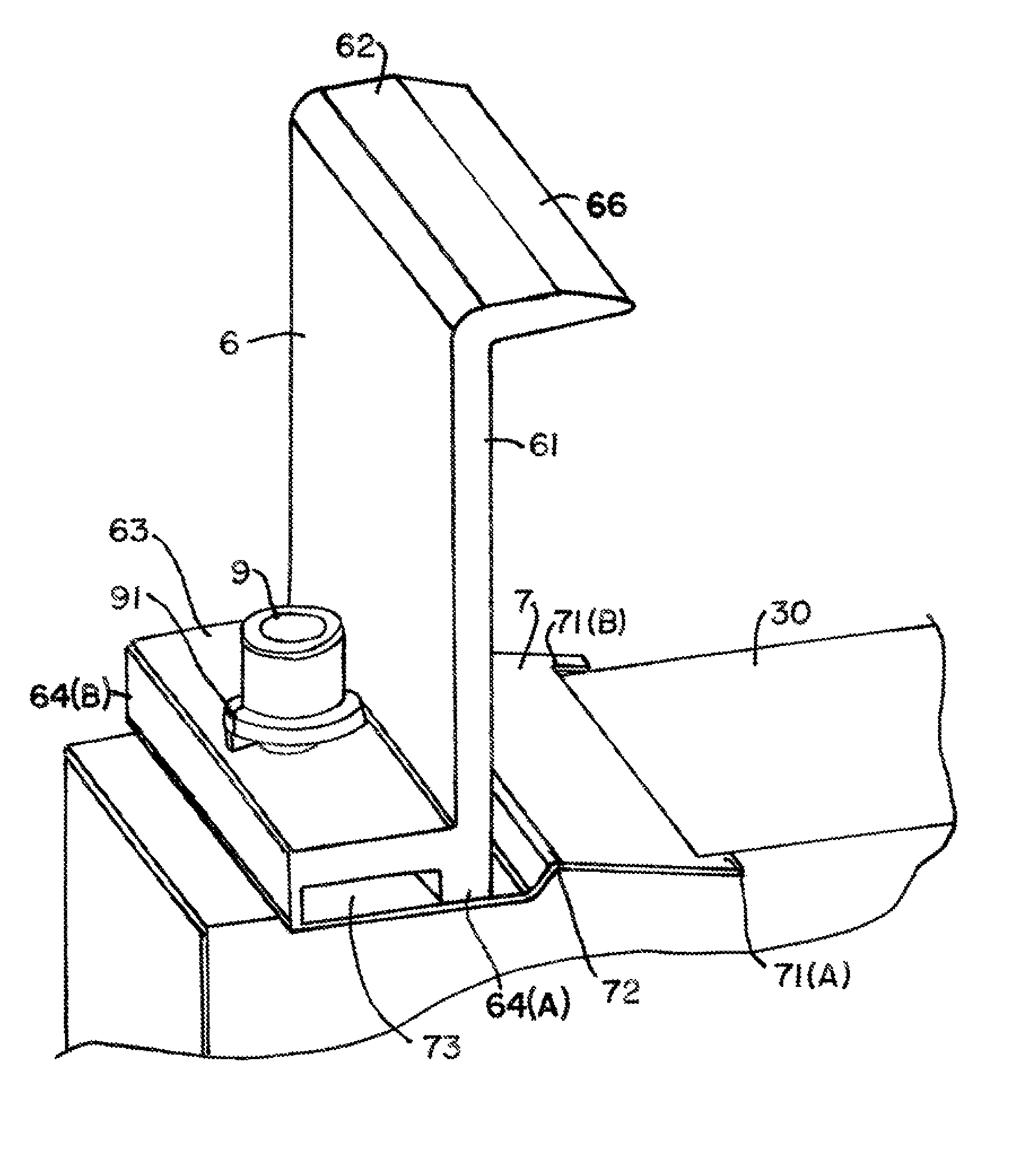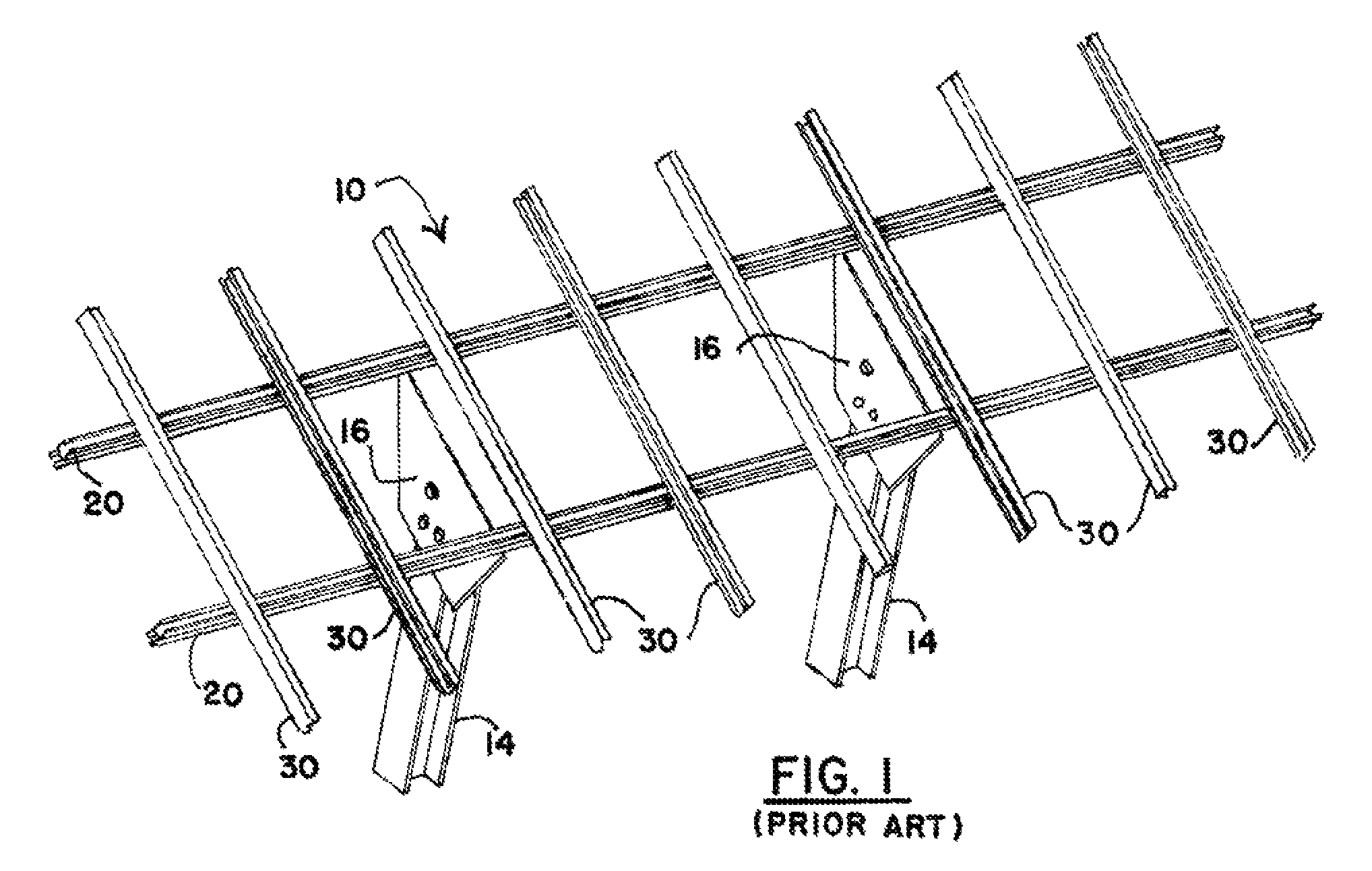Spring clip
a technology of solar panels and support structures, applied in the direction of solar thermal energy generation, solar heating energy, ceilings, etc., can solve the problems of high installation costs, labor-intensive installation, and poor mechanical properties, and achieve the effects of avoiding sagging, facilitating superior support of panels, and reducing standing water accumulation
- Summary
- Abstract
- Description
- Claims
- Application Information
AI Technical Summary
Benefits of technology
Problems solved by technology
Method used
Image
Examples
Embodiment Construction
[0078]As has been previously discussed, conventional panel (solar and other types) support systems tend to be constituted by two dimensional arrays having lower support joists 20 and upper support rails 30. Panel clips or holders 45 are then field-mounted on the upper support rails so that the panels 12 can be placed thereon, and secured with additional portions of the clips. Even with factory pre-alignment and set up of support joists 20 and upper panel rails 30, conventionally, there is little that can be done about the many assembly steps required to place both the panel clips 45 and the panels 12 on the upper support rails 30.
[0079]The present inventions, as depicted in FIGS. 6-18, constitute a departure from the prior arrangements. In particular, panel clips 6 still hold panels 12 along their edges. However, panel rails 30 are not found along the longitudinal (parallel to the length of the panel rails) edges of the panels 12. Rather, the panel rails 30 support panels 12 at posi...
PUM
 Login to View More
Login to View More Abstract
Description
Claims
Application Information
 Login to View More
Login to View More - R&D
- Intellectual Property
- Life Sciences
- Materials
- Tech Scout
- Unparalleled Data Quality
- Higher Quality Content
- 60% Fewer Hallucinations
Browse by: Latest US Patents, China's latest patents, Technical Efficacy Thesaurus, Application Domain, Technology Topic, Popular Technical Reports.
© 2025 PatSnap. All rights reserved.Legal|Privacy policy|Modern Slavery Act Transparency Statement|Sitemap|About US| Contact US: help@patsnap.com



